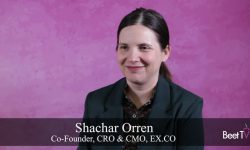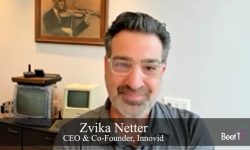LOS ANGELES – In a world filled with technology and two distinctly different kinds of television, it all comes back to people.
That is Ivan Markman’s view. As chief business officer Ivan Markman at Verizon Media, Markman just signed a deal to launch a new Unified TV Report, using Nielsen and Vizio data to help advertisers understand both linear TV and digital campaign performance across Verizon’s own DSP.
In this video interview with Beet.TV, Markman explains the rationale.
Connecting the dots
Verizon Media and Vizio already announced a partnership back in April which saw Verizon Media’s DSP gain access to viewing data on 18 million TVs from Vizio’s Inscape, giving new buying opportunities to its DSP customers.
In the latest, Unified TV Report will combine Verizon Media’s ConnectID people-based audience database with data from Vizio and Nielsen, totalling up to 148 million logged-in users.
“Now we’re bringing it to life to create a way for advertisers to connect the dots between, linear TV and connected TV,” Mark says, “and to connect the dots with, say, native advertising, more traditional video, advertising, display digital out of home.”
From TV to CTV
As linear audiences wane, ad buyers are getting excited about the opportunity to combine digital-style ad buying, targeting and measurement through internet-connected TV, despite persistent gripes about the complexity of doing so.
Those gripes include measuring across a proliferating range of media channels.
Markman acknowledges that consumer behavior is shifting from linear TV to connected TV (CTV).
He sees the ad world dividing up between “haves and have-nots” – those that have first-party identity data and those that do not.
Connecting the world
He says Verizon Media is offering up ConnectID, with data from 152 million unique users in the US.
But combining that with new CTV data from Vizio and linear viewership from Nielsen begins to make the combined offering sound like a relative powerhouse.
“We can help connect the dots and provide views into incremental reach, the duplicated frequency, the kinds of planning that is typically the happening within the TV landscape, and be able to do that seamlessly across both mediums,” he says.














































